#mongolia🇲🇳
Explore tagged Tumblr posts
Text




Altan Uul (алтан уул) the Golden Mountain
Khövsgöl Province (Хөвсгөл)
Mongolia
NOMAD Science Bioarchaeology
4th to 7th (5th) of July 2023
5th of July after storms had rolled in during the afternoon. The sunset that night was amazing and still one of the best of the 3 weeks in the field.
#camping#road trip#photography#landscape#nature#mountains#scenery#geology#Mongolia#mongolia camping#🇲🇳#overseas camping#Archaeology#tent
34 notes
·
View notes
Text
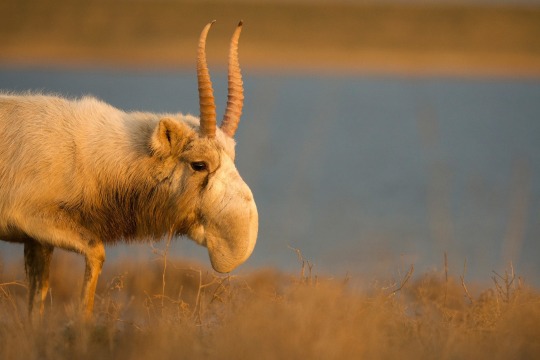
A Male Saiga Antelope in Russia's Black Land National Park. These highly social antelope live in herds. Photograph By Valeriy Malee/Nature Picture Library
This Floppy-Nosed Antelope Was Nearly Gone. 20 Years Later, It’s Thriving.
Less than a decade ago, more than half of the world’s saiga antelope were lost to a mysterious disease. Its comeback is a rare and phenomenal conservation success.
— By Jason Bittel | December 14, 2023
Just two decades ago, it seemed as if we might need to write a eulogy for the saiga antelope.
Cut down by widespread poaching and waves of disease, by 2003, just 6 percent of the floppy-nosed ungulates remained in Kazakhstan, Mongolia, Russia, and Uzbekistan.
But today, scientists are rejoicing at the saiga’s unlikely rebound.
There are now 1.9 million saiga antelope across Eurasia, according to the most recent estimates released this week. So many saiga, in fact, that the International Union for Conservation of Nature is upgrading the Red List status for the species from critically endangered to near threatened.
“There's a lot of conservation doom and gloom, and there isn't very much attention paid to conservation successes,” says E.J. Milner-Gulland, a conservation scientist at the University of Oxford and co-founder of the U.K-based Saiga Conservation Alliance. “It’s quite a vindication of 20 years of hard work by lots of people.”
To get a sense of just how far this species has come, in 2015, more than half of the worldwide population of saiga antelope were lost to a mysterious blood disease.
“This is phenomenal news,” says Joel Berger, an ecologist at Colorado State University and a senior scientist at the Wildlife Conservation Society, in an email.
“At a time when so many species and populations are in deep swan dives, to witness the recovery of saiga—a species deserving of more recognition in its own right—is something we all need to celebrate,” he says.
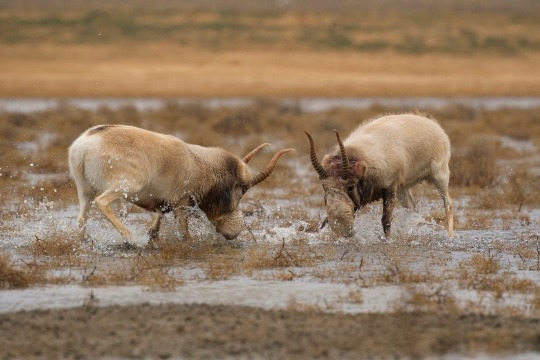
Male Saiga Antelope Battle in Black Lands National Park. Males and their horns are a specific target of poachers. Photograph By Valeriy Malee/Nature Picture Library
The Saiga’s Downward Spiral
Those who have been paying attention to the saiga’s saga know that it’s been a wild ride.
“Twenty years ago, it had the fastest increase in threat status of any mammal,” says Milner-Gulland. “The population had plummeted by more than 90 percent over a really short time of a few years, so it went straight in at critically endangered.”
As for what happened, Milner-Gulland explains that the saiga’s downfall can be attributed to several factors. For starters, saiga horn has great value in China, Singapore, Vietnam, and Malaysia as a component in traditional medicine. And this demand, coupled with the breakup of the Soviet Union, led to a dramatic rise in hunting.
It’s a Symbol of the Wild Steppe, of Independence and Freedom.
— E.J. Milner-Gulland, Conservation Scientist at the University of Oxford
“The economies of these countries basically collapsed,” she says. “And they were living in very harsh conditions on the steppe. So they turned to poaching.”
Fencing along the border between Kazakhstan and Uzbekistan also put a barrier in the middle of the saiga’s migratory route, while infrastructure development cut into saiga habitat. Finally, an unknown trigger turned a naturally occurring microbe in the saiga’s characteristic nose into a virulent pathogen, leading to the mass die-offs.
It’s for all these reasons that the IUCN has chosen not to de-list the saiga completely.
“The near threatened category is right for the saiga, because we know that at any time, we could just get large numbers of them dropping dead again,” says Milner-Gulland. “They are very vulnerable.”
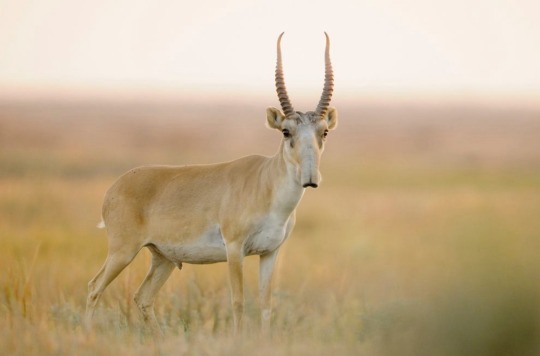
A Path to Recovery
Just as the threats to the saiga were multi-faceted, so too have been the efforts to protect the species, which are important seed dispersers and grazers that contribute to plant biodiversity.
For instance, an international collaboration between countries where saigas roam, countries that traditionally consume saiga products, and other stakeholder nations, including the United States, led to a memorandum of understanding in 2006 to conserve the species, restore its habitat, and restrict harvest to a sustainable level.
For its part, Kazakhstan’s government focused on stronger anti-poaching measures, including law enforcement to prevent saiga hunting. The Saiga Conservation Alliance supplied financing for gasoline, uniforms, motorbikes, and shelters for those rangers, who live in the harsh, windswept grasslands. Customs agents also improved detection of saiga products leaving the country as part of the illicit wildlife trade. Lastly, the country designated multiple protected areas totaling more than 12 million acres of saiga antelope habitat.
Now that economic conditions have leveled out and local people don’t have to choose between their own survival and saving saiga, there has also been a dramatic shift in support for the species.
“The thing about saiga is the local people really love it,” says Milner-Gulland. “It’s a symbol of the wild steppe, of independence and freedom.”
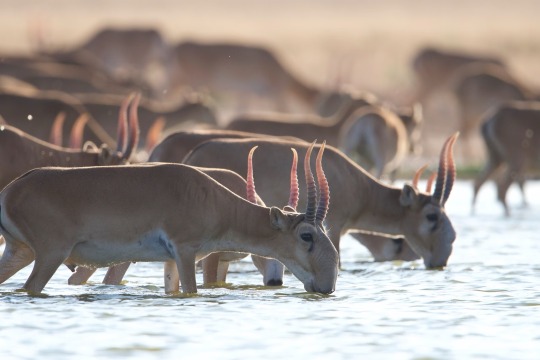
Saiga (Drinking on Southern Russia's Astrakhan Steppe) can migrate up to 600 miles over summer and winter. Photograph By Valeriy Malee/Nature Picture Library
#Animals 🦓 🦒 🐘#Floppy Nosed Antelope#Kazakhstan 🇰🇿 | Mongolia 🇲🇳 | Russia 🇷🇺 | Uzbekistan 🇺🇿#University of Oxford#Saiga Antelope#China 🇨🇳 | Singapore 🇸🇬 | Vietnam 🇻🇳 | Malaysia 🇲🇾#E.J. Milner-Gulland | Conservation Scientist | University of Oxford
44 notes
·
View notes
Text


I LOVE MONGOLIA🇲🇳
6 notes
·
View notes
Text
Mongolian ⁉️⁉️⁉️
yippee i love being for whom the bell tolls 😁 #mybell
12K notes
·
View notes
Text
Нээх сайхан нэмэх градус руугаа орж байхад дөрвөн сарын сүүлээр цас орно ч гэх шиг. Таарч дээ.
0 notes
Text
HERE is the list of the 134 countries that are NOT supporting South Africa's 🇿🇦 claims of genocide against Israel 🇮🇱:
🇦🇩 Andorra
🇦🇴 Angola
🇦🇬 Antigua and Barbuda
🇦🇷 Argentina
🇦🇲 Armenia
🇦🇺 Australia
🇦🇹 Austria
🇧🇸 Bahamas
🇧🇧 Barbados
🇧🇾 Belarus
🇧🇿 Belize
🇧🇹 Bhutan
🇧🇦 Bosnia and Herzegovina
🇧🇼 Botswana
🇧🇬 Bulgaria
🇧🇮 Burundi
🇨🇻 Cabo Verde
🇰🇭 Cambodia
🇨🇦 Canada
🇨🇫 Central African Republic
🇨🇱 Chile
🇨🇳 China
🇰🇲 Comoros
🇨🇬 Congo
🇨🇷 Costa Rica
🇭🇷 Croatia
🇨🇺 Cuba
🇨🇾 Cyprus
🇨🇿 Czech Republic
🇨🇩 Democratic Republic of the Congo
🇩🇰 Denmark
🇩🇲 Dominica
🇩🇴 Dominican Republic
🇹🇱 East Timor (Timor-Leste)
🇪🇨 Ecuador
🇸🇻 El Salvador
🇬🇶 Equatorial Guinea
🇪🇷 Eritrea
🇪🇪 Estonia
🇸🇿 Eswatini
🇪🇹 Ethiopia
🇫🇯 Fiji
🇫🇮 Finland
🇫🇷 France
🇬🇪 Georgia
🇩🇪 Germany
🇬🇭 Ghana
🇬🇷 Greece
🇬🇩 Grenada
🇬🇹 Guatemala
🇭🇹 Haiti
🇭🇳 Honduras
🇭🇺 Hungary
🇮🇸 Iceland
🇮🇳 India
🇮🇪 Ireland
🇮🇹 Italy
🇯🇲 Jamaica
🇯🇵 Japan
🇰🇪 Kenya
🇰🇮 Kiribati
🇰🇵 Korea, North (North Korea)
🇰🇷 Korea, South (South Korea)
🇽🇰 Kosovo
🇱🇦 Laos
🇱🇻 Latvia
🇱🇸 Lesotho
🇱🇷 Liberia
🇱🇮 Liechtenstein
🇱🇹 Lithuania
🇱🇺 Luxembourg
🇲🇬 Madagascar
🇲🇼 Malawi
🇲🇹 Malta
🇲🇭 Marshall Islands
🇲🇺 Mauritius
🇲🇽 Mexico
🇫🇲 Micronesia
🇲🇩 Moldova
🇲🇨 Monaco
🇲🇳 Mongolia
🇲🇪 Montenegro
🇲🇲 Myanmar (Burma)
🇳🇷 Nauru
🇳🇵 Nepal
🇳🇱 Netherlands
🇳🇿 New Zealand
🇳🇮 Nicaragua
🇲🇰 North Macedonia (Macedonia)
🇳🇴 Norway
🇵🇼 Palau
🇵🇦 Panama
🇵🇬 Papua New Guinea
🇵🇾 Paraguay
🇵🇪 Peru
🇵🇭 Philippines
🇵🇱 Poland
🇵🇹 Portugal
🇷🇴 Romania
🇷🇺 Russia
🇷🇼 Rwanda
🇰🇳 Saint Kitts and Nevis
🇱🇨 Saint Lucia
🇻🇨 Saint Vincent and the Grenadines
🇼🇸 Samoa
🇸🇲 San Marino
🇸🇹 Sao Tome and Principe
🇷🇸 Serbia
🇸🇨 Seychelles
🇸🇱 Sierra Leone
🇸🇬 Singapore
🇸🇰 Slovakia
🇸🇮 Slovenia
🇸🇧 Solomon Islands
🇪🇸 Spain
🇱🇰 Sri Lanka
🇸🇪 Sweden
🇨🇭 Switzerland
🇹🇼 Taiwan
🇹🇿 Tanzania
🇹🇭 Thailand
🇹🇴 Tonga
🇹🇹 Trinidad and Tobago
🇹🇳 Tunisia
🇹🇲 Turkmenistan
🇹🇻 Tuvalu
🇺🇦 Ukraine
🇬🇧 United Kingdom (UK)
🇺🇸 United States of America (USA)
🇺🇾 Uruguay
🇻🇺 Vanuatu
🇻🇦 Vatican City
🇻🇳 Vietnam
🇿🇲 Zambia
🇿🇼 Zimbabwe
447 notes
·
View notes
Text
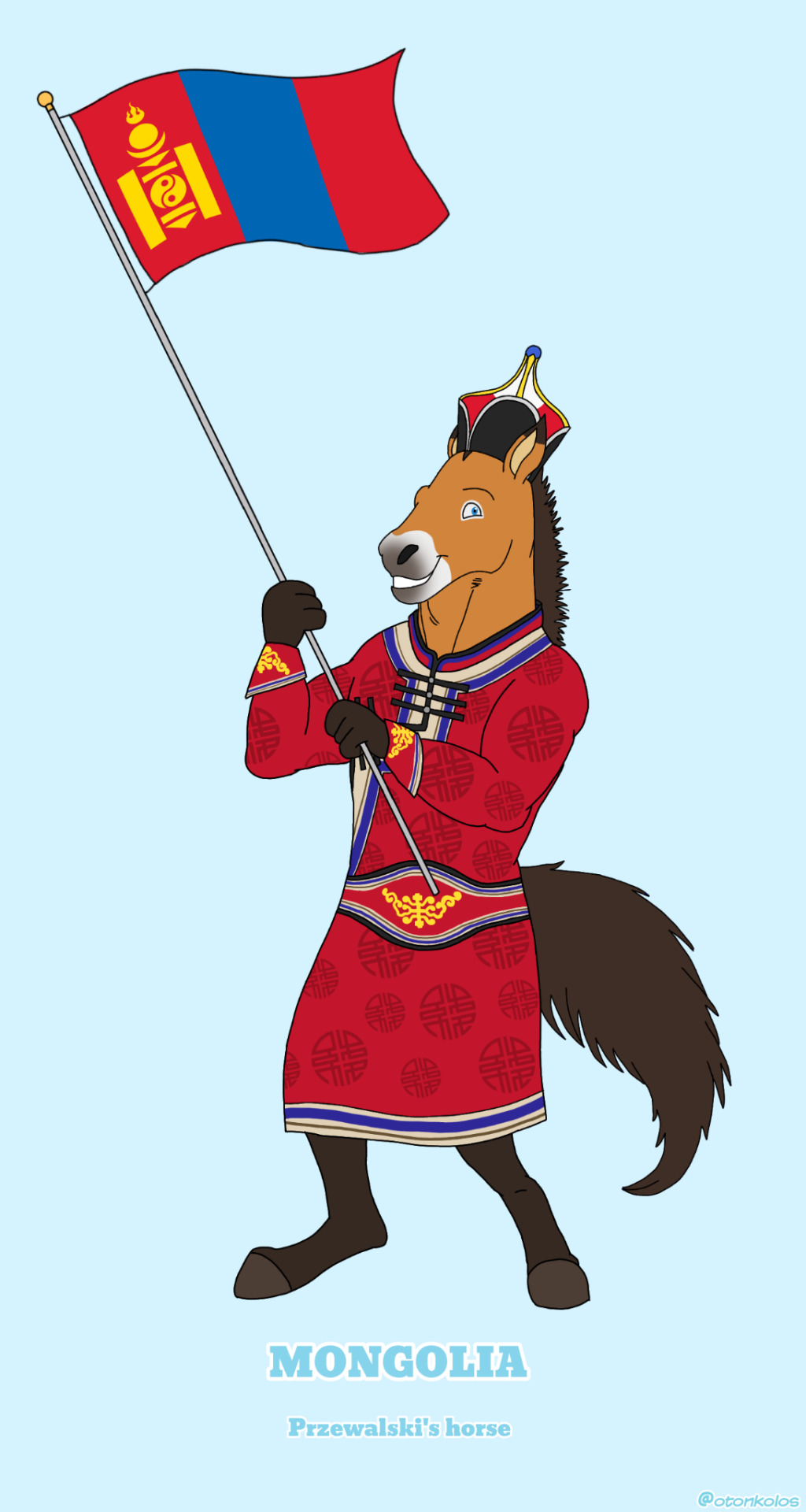
National animal of Mongolia 🇲🇳
#anthro#anthropomorphic#furry#digital art#my art#art#my draw#artists on tumblr#colored#animal#mongolia#przewalski's horse#horse#equine#country#wild horse#national animals#national animal#flag#national flags
27 notes
·
View notes
Text
10 notes
·
View notes
Text
Country Personification for Cindy Nilo Evelyn Doppelganger (Subject: Asia) Part 1


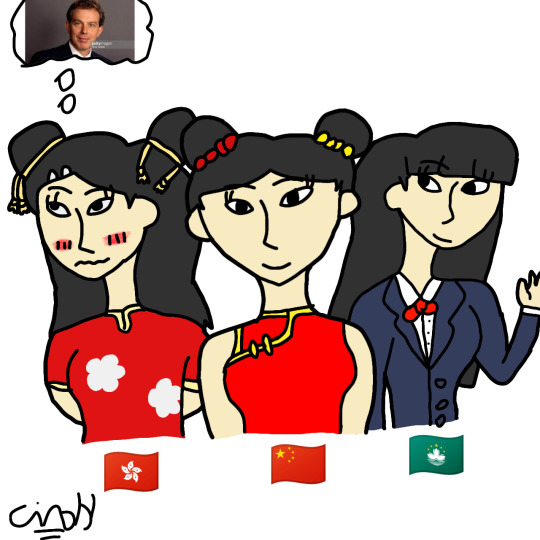




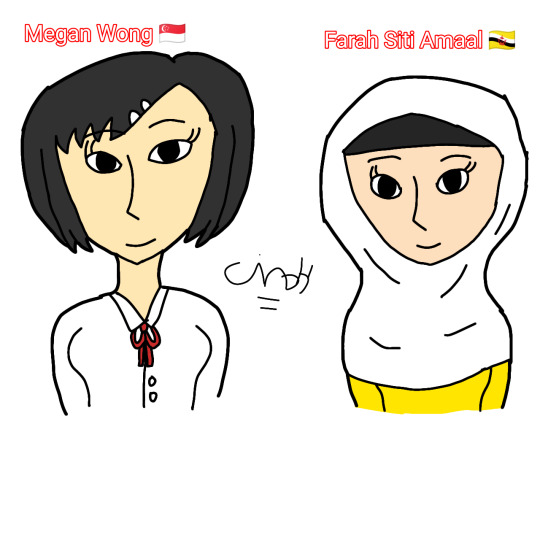


Middle East:
- Alitza Derora (Israel 🇮🇱)
- Hadal Emaya (Palestine 🇵🇸)
- Salma Dalia (Gaza Strip 🇵🇸)
East Asia:
- Ka Yan Mei (Hong Kong 🇭🇰)
- Li Xīn yí (China 🇨🇳)
- Amy Ying (Macau 🇲🇴)
- Mei-Fang (Taiwan 🇹🇼)
- Young-il Woong (South Korea 🇰🇷)
- Jang Chae-Yeong (North Korea 🇰🇵)
- Himari Airi (Japan 🇯🇵)
Southeast Asia:
- Natya Bimala (Indonesia 🇮🇩)
- Nayla Puspawati (Malaysia 🇲🇾)
- Nathalie Carmelita (Philippines 🇵🇭)
- Megan Wong (Singapore 🇸🇬)
- Farah Siti Amaal (Brunei Darussalam 🇧🇳)
- Emily Paulo Amancio (East Timor/Timor Leste 🇹🇱)
North Asia:
- Amgalan Sarantuya (Mongolia 🇲🇳)
- Khuskhaçakh Amır (Siberia - Russia 🇷🇺) (fun fact: Russia was part between Europe and Asia)
#asia#country personification#countryhumans#doppelganger#israel#palestine#gaza strip#middle east#hong kong#china#macau#taiwan#south korea#north korea#indonesia#malaysia#philippines#singapore#brunei darussalam#east timor#mongolia#russia#east asia#southeast asia#north asian#europe#cindy the cat pink art#cindy the cat pink#oc#original character
7 notes
·
View notes
Text
Archaeology: How Asia’s First Nomadic Empire Broke the Rules of Imperial Expansion
Ancient China’s mobile neighbors built an empire that’s attracting scientific scrutiny

Xiongnu Herders in what’s now Mongolia, portrayed in this painting, followed their own rules in building a multiethnic empire and advancing iron-making technology starting around 2,200 years ago, new studies indicate. Flickr (CC0 1.0)
— By Bruce Bower | July 2, 2023
In an age that spawned the ancient Roman and Egyptian Empires, Mongolia’s Xiongnu Empire broke the rules of imperial expansion.
Long before the Mongol Empire arose, Asia’s first nomadic empire, horse-riding Xiongnu people, conquered ethnic groups across the continent’s northeastern and central expanses (SN: 1/29/10). A common political system headed by Xiongnu imperial rulers formed about 209 B.C. and lasted for roughly 300 years. Unlike in Rome or Egypt, mobile groups of Xiongnu animal herders accomplished this feat without building cities, forming central bureaucracies, devising a writing system or mobilizing masses of farmers to produce food.
Today, remnants of Xiongnu culture largely consist of more than 7,000 tombs, some heavily looted and many yet to be excavated, in Mongolia and nearby parts of China and Russia. In the last decade, geneticists and archaeologists have ramped up efforts to study these sites and ancient records to decipher the Xiongnu Empire’s political organization and technological achievements.

Starting from a heartland in what’s now central Mongolia, the Xiongnu Empire (brown) spread across a large part of northern Asia, taking hold around 2,200 years ago. Naturalearthdata.Com/Wikipedia (CC0 1.0)
A few ancient Chinese chronicles include descriptions of the Xiongnu political system. These accounts portray the Xiongnu as predatory raiders who belonged to a “simple” confederation of herding groups run by a few nomadic alpha males. Even so, warfare with mounted Xiongnu warriors equipped with bows, arrows and metal weapons had inspired Imperial Chinese leaders to construct their Great Wall.
Some researchers have argued that Xiongnu people formed a lesser, “shadow empire” alongside Imperial China. But that view is giving way to a picture of the Xiongnu Empire as a different, not lesser, type of ancient state, says Yale University archaeologist William Honeychurch.
In this view, nomadic Xiongnu elites developed a flexible system of political power that connected mobile groups with different genetic and cultural ancestries spread across extensive grasslands and forests. “Elite lineages were not only an important part of a multiethnic Xiongnu state, but members of these lineages were sent to peripheral areas as part of state integration,” Honeychurch says. One new study, for example, indicates that Xiongnu women from elite lineages in central Mongolia served as “princess” emissaries to the empire’s frontier, assuming political power in distant territories populated by various ethnic groups.
“This must have been an empire organized around moving populations,” says archaeologist Bryan Miller of the University of Michigan in Ann Arbor. “Xiongnu elites were savvy politicians who delegated power to keep the empire together.”
In another recent development, excavations in Central Mongolia point to Xiongnu people as early ironworking innovators whose advances spread to their regional neighbors. These discoveries, and others, highlight the unappreciated complexity and the ongoing mystery of how Xiongnu society worked, researchers say.
The Xiongnu Dispatched Frontier ‘Princesses’
Initial insights into the Xiongnu people’s diverse genetic origins were first published in 2020. DNA extracted from remains of 60 individuals excavated at 27 Xiongnu sites indicated that two genetically distinct populations of Mongolian herders had coalesced to become the Xiongnu people around 2,200 years ago. One population descended from several western Mongolian cultures and the other from a couple of eastern Mongolian cultures.
Additional genetic contributions to the Xiongnu mix then came from farther away, most likely a culture near present-day Ukraine as well as Imperial China, reported archaeogeneticist Choongwon Jeong of Seoul National University in South Korea and colleagues.
Building on those findings, Jeong’s team then examined DNA of 17 individuals from elite and low-status graves at two Mongolian cemeteries on the Xiongnu Empire’s western frontier. Central Mongolia’s Xiongnu heartland lay around 1,200 kilometers to the east.
The six largest and richest tombs contained women whose genetic ancestry traced back to central Mongolia, the scientists reported in April in Science Advances. These women rested in wooden coffins placed in square tombs. Items found in these tombs included gold sun and moon emblems of Xiongnu imperial power, glass beads, silk clothes and Chinese mirrors.

Gold Sun and Moon Emblems of Imperial Xiongnu power were found among other elite items in a woman’s tomb on the western edge of the ancient nomadic empire. DNA evidence indicates the woman was related to ruling families in the empire’s Mongolian heartland. © J. Bayarsaikhan
One woman was buried with horse-riding equipment, a gilded iron belt clasp and a Chinese lacquer cup. These objects have previously been found in graves of male horse-mounted warriors. But such items signal that a deceased person had been powerful, not necessarily a warrior, says Miller, a study coauthor.
Miller and his colleagues suggest that the women had been sent to the frontier to maintain Xiongnu traditions and nurture contacts with Silk Road trade networks (SN: 3/8/17). Preliminary signs of genetic relatedness among individuals interred at one of the cemeteries suggest that some elite Xiongnu “princesses” also cemented power by marrying into local families.
The elite women’s graves were flanked by simple graves of adult men, and of girls and boys ranging from babies to adolescents. These commoners possessed greater genetic diversity than the female big shots. If the men were retainers or servants of female elites, they had come from distant parts of the Xiongnu Empire or possibly beyond, the researchers say.
Male Rulers Were Homebody ‘Princes’
Like these female elites, premier Xiongnu rulers had common roots in central Mongolia while their followers had diverse geographic origins, another team reports in the June Archaeological Research in Asia. But rather than being sent to the far reaches of the empire, these rulers stayed close to home.
Three male nobles interred in large underground tombs at one of the largest Xiongnu cemeteries, Gol Mod 2, spent most or possibly all their lives in the Khanuy Valley where they were buried, say archaeologist Ligang Zhou of Henan Provincial Institute of Cultural Heritage and Archaeology in Zhengzhou, China and colleagues.
Meanwhile, at least four of eight individuals buried in some of the many small satellite graves situated near the nobles’ tombs had spent much of their lives in distant places before settling in or near the Khanuy Valley, measurements of different forms of the element strontium in individuals’ teeth and bones indicate. Diet-related strontium signatures, which vary from one region to another, signal where a person spent early and later parts of their lives.
The identities of those in satellite graves, who were apparently killed to form entourages of followers that accompanied deceased nobles, are unclear. They include children and adults, Zhou says. Some were buried with metal weapons or luxury objects such as jewelry.
Genetic and strontium findings suggest that “Xiongnu political organization in central and western Mongolia was highly similar,” Zhou says. Then, as the empire expanded, rulers in the Xiongnu heartland sent select members of their extended families, such as high-ranking women, to new territories in order to replicate the imperial power structure.
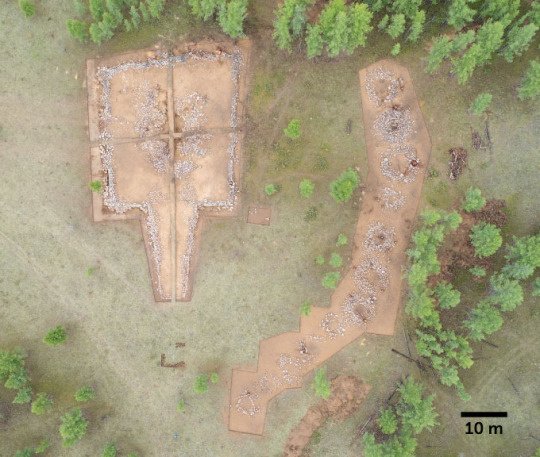
Seen from above, a Xiongnu noble’s tomb, left, lies near a set of small tombs that contained his followers to the afterlife. Xiao Ren, Henan Provincial Institute of Culture Heritage an Archaeology
Iron Innovations Bolstered the Xiongnu Empire
From the start, Xiongnu imperial power depended on a ready supply of iron weapons and other gear that enabled horse-mounted warfare. Researchers who view the Xiongnu Empire as a faint version of Imperial China argue that the nomads’ power depended on importing crops and borrowing iron-making techniques, or simply trading for iron products, from the Chinese.
But new findings suggest that Central Mongolian metallurgists launched a regional boom in iron production around the time the Xiongnu Empire originated, says archaeologist Ursula Brosseder of the University of Bonn in Germany.
At a riverbank site, Brosseder and colleagues have excavated five iron smelting installations that contain by-products of iron making and burned wood. Radiocarbon dates of that material extend to as early as around 2,200 years ago, when the Xiongnu Empire arose.
That makes these finds, each of which consists of two pits connected by a tunnel, the oldest Xiongnu iron smelting kilns by at least 100 years, the researchers reported in March in Asian Archaeology.
Earlier research had established that people living just north of Xiongnu territory in southern Siberia started producing iron as early as around 2,800 years ago. Based on comparisons of finds in the two regions, Xiongnu metallurgists not only learned about iron making from their neighbors but also invented tunnel furnaces, the investigators say. Eastern Asian groups outside the Xiongnu sphere began making and using tunnel furnaces over the next couple of centuries.
Discoveries by Brosseder’s group “show that metallurgy reached the Xiongnu in Mongolia from southern Siberia, not China,” says archaeologist Nikolay Kradin, director of the Institute of History, Archaeology and Ethnology at the Far-Eastern Branch of the Russian Academy of Sciences in Vladivostok. Craftspeople at several iron-making centers, some slightly younger than Brosseder’s discoveries and others yet to be found, must have managed that technological transition, hypothesizes Kradin, who did not participate in the new research.
Brosseder suspects the Mongolian site she’s studied hosted a major iron-making operation. Four iron-making furnaces excavated near the other five have not yet been dated. And ground-based remote sensing equipment has revealed signs of at least 15, and possibly 26, more iron smelting kilns still covered by sediment.
“We can expect more findings of Xiongnu iron smelting centers considering the demand for iron horse gear, arrowheads, carts and other material by the empire’s large army,” Brosseder says.
No reliable estimates exist for the size of that army, or for the overall number of Xiongnu people, says Michigan’s Miller. Xiongnu herders, who also occasionally cultivated a grain called millet, moved across the landscape in relatively small groups that must have been greatly outnumbered by Imperial China’s estimated 60 million citizens.
The Capital Was a Seasonal Seat of Power
In the same valley where Brosseder’s group discovered the oldest known Xiongnu iron smelting kilns, Mongolian researchers have uncovered remains of what was probably a Xiongnu political center, or perhaps even its capital, called Longcheng in 2020. Consistent with everything else about the Xiongnu Empire, “this was a capital of a different kind,” says Miller.
Longcheng excavations so far have focused on a large building that may have hosted important gatherings.
Roof tiles on that structure bear an inscription in ancient Chinese characters that reads “Son of Heaven Chanyu.” Chinese records refer to the supreme Xiongnu ruler as “chanyu.” That royal inscription, the only one found within the Xiongnu realm, identifies Longcheng as a seat of power, Miller says.
Rather than a permanent site, Longcheng, like several excavated Xiongnu villages and walled compounds in central Mongolia, served as a seasonal stopover or temporary meeting place, Miller suspects (SN: 11/15/17). “We don’t know if those other sites were separate political capitals for the Xiongnu,” he says. Top Xiongnu honchos gathered for part of the year at Longcheng before packing up and moving elsewhere, he speculates. Xiongnu herders, regardless of political status, navigated animals to seasonal grazing spots. Staying in one place throughout the year was not an option.
Having a flexible, mobile system of rule appears to have kept the nomadic realm rolling for a few hundred years before the Xiongnu Empire rapidly disintegrated about 1,900 years ago. Why it did so is an enduring mystery. Perhaps the empire succumbed to combined attacks by Imperial China and other groups or, in true nomadic fashion, Xiongnu people reorganized on a smaller scale and moved to safer areas.
Still, “the Xiongnu had created a massive imperial network in Asia,” Miller says. “Their ways of life didn’t go away overnight.” For instance, Xiongnu-mediated trading by groups situated along Central Asia’s Silk Road routes continued despite military defeats in the empire’s central Mongolian heartland. Only further archaeological and genetic discoveries can clarify how Xiongnu people in the imperial core responded to those setbacks.
Whatever happened, Asia’s first nomadic empire can likely be counted on for a few more surprises.
— Science New, July 02, 2023, By Bruce Bower
#Archaeology#Nomedic Empire#Bruce Bower#Xiongnu Herders#Mongolia 🇲🇳#Roman and Egyptian Empires#Xiongnu Empire and Empirial Rulers#Xiongnu Warriors#Chinese Imperial Leaders#Great Wall#Yale University Archaeologist William Honeychurch#Bryan Miller of the University of Michigan in Ann Arbor#Science Advances#Glass Beads Silk Clothes and Chinese Mirrors#Wooden Coffins ⚰️#Square Tombs#Henan Provincial Institute of Cultural Heritage and Archaeology in Zhengzhou China 🇨🇳#Princesses#Nikolay Kradin#Institute of History Archaeology and Ethnology at the Far-Eastern Branch of the Russian Academy of Sciences in Vladivostok#Siberia#Brosseder’s Group#Archaeologist Ursula Brosseder of the University of Bonn Germany 🇩🇪
10 notes
·
View notes
Video
The Kharaa river basin por Temuulen Batkhurel Por Flickr: The appearance of the flooded Kharaa river basin after heavy rainy days ⛈☀️ Near Tsaidam station, the north part of the Trans-Mongolian railway 🇲🇳 We love #M62 #2M62 #Wumme #Taigatrommel #Mongolia ©2023 Contact us and Inquire about 2024 tours: [email protected]
6 notes
·
View notes
Note
rate the flag of mongolia 🇲🇳 1-10
its so good but it always fucks up my score on geography tests bc i get it mixed up with cambodia 🇰🇭 theyre both red and blue with a lighter colored building. 8/10
3 notes
·
View notes
Text
I am NOT a sex angel. I am NOT a manic pixie dream girl. These are things that are NOT TRUE about me. I am an adult human woman. I have hair that’s a stupid color right now. I have sick new glasses coming in the mail. My dream travel destinations are currently Georgia 🇬🇪, Iran 🇮🇷, Mongolia 🇲🇳, and France 🇫🇷. I have a wonderful cat her name is Millie. I have strong opinions about books. These are things that ARE TRUE about me.
4 notes
·
View notes
Text

🌟 Welcome to the enchanting realm of Latex Legends League Season 4, where dreams are woven into reality and legends are etched in rubber! 💫 Join us on a mesmerizing voyage as 21 human contenders and 15 AI characters embark on a quest for the prestigious title of Latex Legend.
Now, let's turn our gaze to Erdene, representing Mongolia! 🇲🇳 This visionary fashion designer from the heart of Mongolia brings a unique blend of tradition and modernity to his impressive rubber creations. 🎨✨
With a keen eye for detail and a passion for innovation, Erdene crafts breathtaking ensembles that pay homage to his cultural heritage while embracing contemporary flair. Each of his designs tells a story of resilience, beauty, and the enduring spirit of Mongolia.
As Erdene takes center stage, he invites us to witness the fusion of past and present, tradition and innovation. His exquisite creations captivate the senses, evoking a sense of wonder and admiration.
Join us in celebrating Erdene's journey as he weaves a tapestry of elegance and sophistication in Latex Legends League Season 4. Let's honor his creative genius and embrace the rich tapestry of Mongolian culture! 🎉👘
9 notes
·
View notes
Text
Should I post my drawings about Mongolia here?🤔😳🇲🇳
7 notes
·
View notes
Text
Hate overtourism? Here’s an idea for your next trip 👀 Overtourism isn’t just a buzz word; it’s a real issue for many frequently touristed spots around the world. 🚫 What’s one incredible locale that wants more international travelers? Mongolia! 🇲🇳 Mongolia was long at the top of my list, so it was a dream to travel there for the Golden Eagle Festival two years ago. Centered around the Mongolian Kazakh tradition of eagle hunting on horseback, this festival draws attendees from around the world, all of whom make the long trek to the far western province of Bayan-Ölgii to witness the eye-popping spectacle. 🦅 From competitions based on golden eagles’ prowess to archery and camel-racing competitions, the early October event is unlike anything else I’ve attended. 🙌 ���️ FESTIVAL TIPS ➡️ 🌏 Because the festival is so remote, attendees can either fly (which is more expensive) or make the multi-day drive (which is cheaper) between the capital city of Ulaanbaatar and Ölgii. I opted for flying since I was short on time, with just 10 days total to travel within Mongolia. This allowed me to also explore other regions of the country, which are beautiful, vast, and varied. ✈️ Hotels and flights tend to book up well in advance of the festival, so it’s smart to book tickets/rooms as soon as bookings open for each. 🍫 Infrastructure at the festival grounds is limited, so bringing your own comfort items (e.g. warm clothes, filtered water, snacks, TP, etc) is smart—and practicing Leave no Trace is essential. 📸 Taking photographs of eagle hunters while they engage in competition is appropriate, but taking pictures of them without their permission *outside* of competition time is not. The best practice is to engage in conversation first, request permission to take portraits or action shots, and offer a small bit of money as a gesture of thanks. These small offers of thanks help support their journeys to/from the festival, support their elaborate festival costumes, and *also* support the maintenance of their cultural heritage. 🚌 If you’d like to attend the Golden Eagle Festival in 2025 or beyond, I loved traveling with @elsewhere.io. They planned an incredible adventure for me and a friend, from the capital city to the festival and beyond.
#mongolia#ulaanbaatar#mongol#igersmongolia#goldeneaglefestival#wildlifephotography#birding#natgeoyourshot#eagles
2 notes
·
View notes